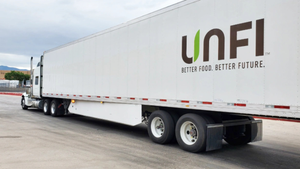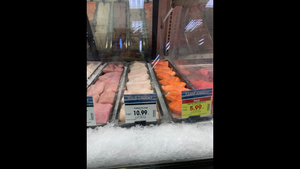Technology Boosts Kroger’s Vendor Collaboration
CINCINNATI — Kroger Co. has taken data sharing to a new level with technology that analyzes the sales performance of products in every store and shares it with suppliers on a daily basis.
August 9, 2013
CINCINNATI — Kroger Co. has taken data sharing to a new level with technology that analyzes the sales performance of products in every store and shares it with suppliers on a daily basis.
Rather than simply provide vendors with reams of raw sales data, Kroger is leveraging a platform that provides both the retailer and its vendors with daily store- and item-level data that has been cleaned up and coupled with reporting and analytics. The goal is to provide insights about promotion execution, new-item introduction, inventory levels and other aspects of sales performance that allow suppliers to react quickly.
Kroger began testing the technology, from Deerfield, Ill.-based Market6, in 2010 with two suppliers — Kraft Foods and Procter & Gamble — and has since expanded its use to 470 different suppliers, including the national sales agencies, according to Market6.
Follow @SN_News for updates throughout the day.
Sales data is sent by Kroger each day to a secure, hosted environment, where it is enhanced so that the next morning Kroger’s business partners can access the reports through a browser on their computer or through their tablet or mobile device.
Kroger declined to discuss its use of Market6, but several of the suppliers who are working with Kroger shared details with SN about how they use the system.
Read more: Kroger Readies Suppliers for Data Sync
Brian Barren, customer business development, Procter & Gamble, said P&G uses Market6’s full DemandView suite, including its Category Management and Replenishment applications. The Market6 analytics help P&G “forecast demand as well as monitor inventory to reduce out of stocks,” Barren said. “Market6 analytics help us quickly identify opportunities to develop and execute plans that help us meet the needs of Kroger’s shoppers.”
The analytics provide daily, item-level detail for all of P&G’s products and categories at every Kroger store and warehouse.
“The combination of ‘real time data’ and the granular level of detail enable us to constantly monitor in-store conditions to optimize supply chain planning, enabling P&G to proactively work plans to improve in-stock and optimize inventory,” Barren said. “They also provide us each day with a forward-looking demand forecast for every item in every store, which we roll up multiple ways to see demand within each DC or across an entire set of SKUs.”
With the teams from both Kroger and P&G looking at the same data, it also facilitates collaborative meetings between teams from the two companies, he explained.
Read more: Kroger Takes Customer Data to a Higher Level
Dave Jackett, senior manager of capability development at General Mills, Minneapolis, said using the analytics to work with Kroger allows the supplier to provide better service.
“Both the buyer and our customer service representative were able to go into the system and take a look at specific inventory levels as we were coming out of a promotion,” he said. “I think this allowed us to make better decisions.
“It takes a lot of the guess work out of day to day interactions. I think we have just started to scratch the surface of what is possible there.”
Mike Walker, vice president of customer solutions, Coca-Cola North America Group, said the analytics allow the company to be more demand-driven in its processes.
“Ultimately, it allows us to write better orders and deliver the right quantity and mix of product at the right time to each store,” he said. “This translates into fewer out of stocks and increased customer satisfaction, both of which directly support our ability to help Kroger deliver on its Customer First mission."
Barbara Petrocelli, marketing director at Market6, said users can “slice and dice the data however they want by store, district, item, etc.”
In the alcoholic beverage category, for example, some vendors analyze sales by distributor, or by variety of wine, or by country of origin.
“This gives them tremendous flexibility to dig into the most salient attributes that are driving consumer demand or performance around the business, like sales trends, out of stocks, or prices,” she said.
You May Also Like






